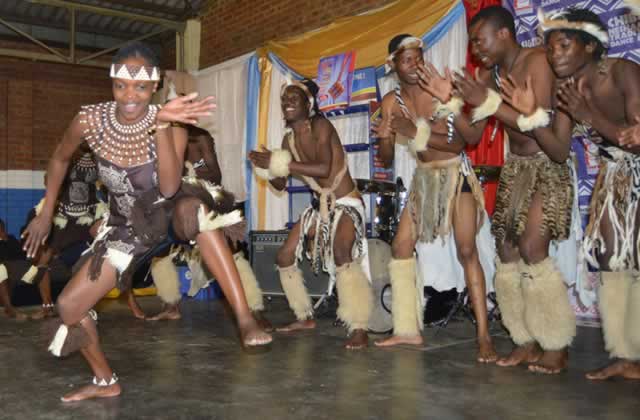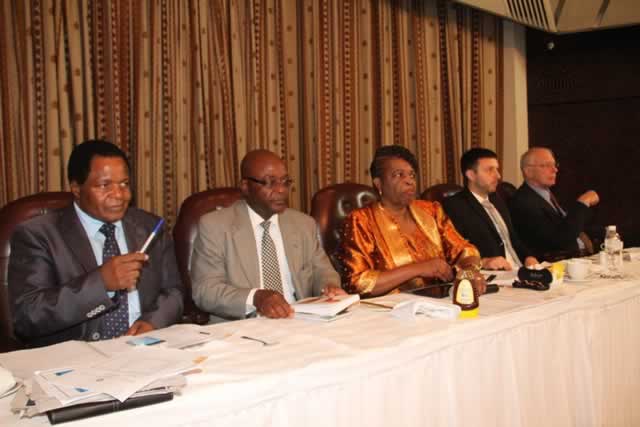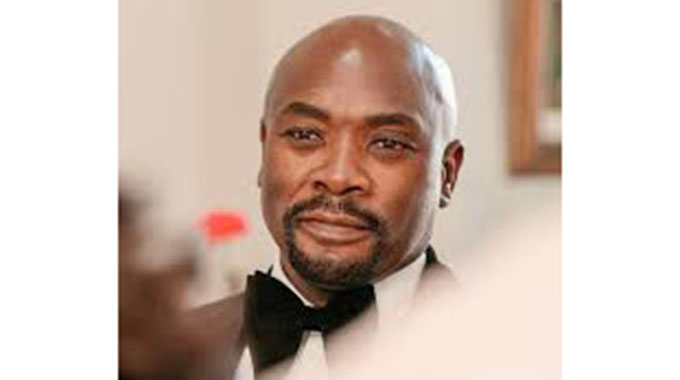Traditional dances under threat

Arts Reporters
Traditional dances in the country are now under threat of extinction due to changes in culture and beliefs.
As growing technology rapidly builds a global village that compresses divergent beliefs and cultures into a bracket of popular culture, traditional practices continue to suffer.
In Zimbabwe, old traditions are fading away and giving way to a certain way of life that is common, especially, in the urban community.
Traditional dances have suffered due to the shifting ways of life and the remnants of such practices are mainly in rural areas where some traditional rituals are still being practised.
Traditional dances have largely been part of ceremonies over the years.
When people gather for celebrations, mourning or rituals, traditional dances and music take centre stage.
The dances are an expression of culture and beliefs. However, although the majority of the Zimbabwean population is in rural areas, cultural evolution has caught up with various rural communities and “old” traditions are being eroded.
Traditional dances, like many other cultural practices are under siege from new and urbanised beliefs and they are under threat of extinction.
However, there are various efforts from the corporate world and traditional leaders to save traditional dances from complete erosion.
Through contests of traditional dances among school children and adults, organisers are making efforts to cultivate interests in “ancient” dance styles.
School children across the country are encouraged to keep their traditional roots through Jikinya Traditional Dance Festival, a collaborative effort between Delta Beverages and National Arts Council of Zimbabwe.
Jikinya has for many years exhibited talent among the young people while it also strives for cultural heritage preservation through encouraging children to pursue various traditional dances.
The national competition features 10 representatives from the country’s provinces. Primary schools from around the country showcase their traditional dance skills at the competition that has a category for compulsory dance that ensures exchange of cultural dances among pupils of various backgrounds.
More than 2 000 pupils take part in the competition every year and the major thrust is to safeguard cultural heritage through dance.
Also on a cultural heritage preservation note, Delta works with NACZ and National Traditional Dance Trust of Zimbabwe to run Chibuku Neshamwari Traditional Dance Festival that targets adults.
Annually all provinces participate in the competition, performing various traditional dances that exhibit the country’s culture and identity. The traditional dance groups come together to celebrate culture and compete for monetary rewards of the competition.
Provincial winners pocket $1 000 each while at national finals champions walk away with $4 000, first runner up goes away with $3 000 and second runner-up pockets $2 000.
Delta started sponsoring the competition in 1986 and last year 130 groups countrywide participated in the competition.
Traditional dance groups like Hwamanda, Zvido Zvevanhu, Ben Arinoti and Villa 1 Nyau have participated at the festival.
There are many other initiatives to maintain traditional dance alive that include Mbende-Jerusarema Dance Festival and the Murewa-Uzumba Cultural Festival (Mucuf) but interest in such movements continues to decline as most people prefer practices that have international influence.
Dance occupies a crucial place in Zimbabwean culture. There are about 12 prominent traditional dances in Zimbabwe, namely Shangara, Mbira dance, Dinhe, Mbakumba, Muchongoyo, Jerusarema, Mhande, Isitschikitsha, Amabhiza, Ingquza, Chinyobera and Ngungu. The Jerusarema dance and the Muchongoyo are widely regarded as the most important and distinctive dances of Zimbabwe.
Zimbabwean dances are communal and largely performed in the rural areas.
Although the traditional purposes of the dances tend to change over time, their meaning and significance is often preserved. Zimbabwean dances are performed for three main purposes; religious, social and ceremonial. They are also used to teach social values, recite history, encourage people to work, aid in funeral proceedings, celebrate festivals, praise or criticise members of the community and more importantly, help communities connect with the ancestors.
Zimbabwe’s traditional dances are mostly participatory, and often invite spectators to be part of the performance. With the exception of a few spiritual, religious or initiation dances, there are traditionally no barriers between dancers and onlookers. Even ritual dances often have a time when spectators participate.
In natural settings, dances usually take very long hours, up to twelve hours or even days. This is common especially for religious dances such as the Mbira dance.
Rhythm is an important aspect of Zimbabwean traditional dances. Like most African dances, Zimbabwean dances employ polyrhythm, which is usually complemented by body articulation.
The most common musical instruments used in the dances are mbira, hosho (rattle), ngoma (drum), magavhu (leg rattle) and the human voice. The mbira is perhaps the most widely used instrument in traditional Zimbabwean music. It is plucked with the fingers to produce the melody, and is often used during religious rituals by spirit mediums in order to communicate with ancestral spirits. Another important aspect of traditional dance is the clothing. Most of the costumes are made from natural materials such as grass and animal skin.
Jerusarema dance, Shangara, Dinhe, Mbakumba, Mbira dance and Mhande are popular dances among the Shona people who constitute about 76 percent of the Zimbabwean population. Jerusarema, also known as Mbende, is perhaps the most celebrated dance of the Shona people. It is practised mainly in Mashonaland East.
Because of its sexual movements, the dance was originally performed exclusively during the marriage ceremony of a chief’s daughter but it is now open to all men and women. Jerusarema is characterised by a single polyrhythmic drum sound accompanied by woodblock clapper sounds, handclapping, yodelling and blowing whistles. Unlike most dances, Jerusarema does not rely on intricate foot stamping or many drummers. Instead, the music is performed by one master drummer. In the course of the dance, men often crouch while jerking both arms and vigorously kicking the ground with the right leg in imitation of a burrowing mole. Before colonial rule, this ancient fertility dance was called Mbende, the Shona word for “mole”, which was regarded as a symbol of fertility, sexuality and family. In modern Zimbabwe, Jerusarema can be performed at funerals, festivals, celebrations and even recreational competitions.
Mbira dance is a characteristic, traditional ritual dance, accompanied by the mbira instrument. It is designed for specific occasions, usually religious in nature, and it is used to express the people. The Mbira dance is often used to lure spirits to come out through spirit mediums and communicate with the people. This dance is carried on by the elders of the tribes, and is very powerful in its spiritual traditions.
Mbira dance is perhaps the most religious of all Shona dances. It is usually performed by community elders at important ancestral ceremonies such as the Bira. The dance is accompanied by Mbira music and used as a medium to invite ancestral spirits into the midst of the community. Mbira dance and music therefore play a significant role in bringing the spirits of the ancestors into the community. Mbira dance is regarded as unique for its intricate foot movements, graceful pauses and high-energy jump bursts.
While Mbira dance is performed in community with others, it can also be a solo dance for purposes of entertainment and building physical strength.
The Dinhe dance is a religious dance that is also performed to praise and invite the ancestors to speak to the community.
A lot of war movements and movements of joy are used in this dance. Dinhe also exhibits the agricultural aspect of life, and such props reflecting these themes may also be used. The Dinhe dance uses different songs to accompany the dance, and the mood is critical in inviting the ancestral spirits. The Mbakumba dance is a polyrhythmic dance that is traditionally performed after harvest and is still used today for entertainment.
Mhande dance is mostly popular among the Karanga people. The dance uses indigenous ritual context or spirituality (known as chikaranga). It is characterised by distinct rhythms and melodies, slow and dignified foot movements and the use of handheld objects and substances such as snuff and ceremonial beer, which symbolise interaction between the community and the ancestors.
Mhande dance is commonly performed at the popular kurova guva ceremony, which is done by Shona people to welcome the return of a deceased family member’s spirit (known as mudzimu).
Popular dances among the Ndebele include Muchongoyo, Isitshikitsha, Amabhiza and Ingquza. Historically, Muchongoyo dance was performed by men in preparation for war or after war, and especially when the Ndebele warriors were victorious.
The dance is typically performed with a stick and a shield. Men do the dancing and women are responsible for the singing. It is also a social and recreational dance, and does not have a religious feature; instead it highlights the events of the society.
The signature movement is stamping, and dramatic gestures as well as a mimetic element are essential.
Another important dance for the Ndebele is Isitshikitsha — a ceremonial dance, historically performed for the King’s pleasure. Isitshikitsha was also commonly performed at the injelele, a rain-making.
The dance routine employs a unique brand of rhythm and style. In contemporary times Isitshikitsha is performed at social gatherings, weddings or first fruits ceremonies. It is accompanied by singing, clapping, ululation and whistling.
However, traditional dances in Zimbabwe are not limited to the Shona and Ndebele tribes because all ethnic groups have dances that define their cultures.
Nyau dance, that originates from Malawi has taken a significant chunk of Zimbabwean traditional dance.
Many nyau groups have won national traditional dance competitions and the style is no longer a preserve of people of Malawian origins.
But the influence of other African dances in Zimbabwe remains minimal as Western styles pose a serious threat, not only to the country but to various African traditional beliefs.
Despite numerous efforts to preserve our culture and traditions, Zimbabwean traditional dances are under serious threat of extinction. — additional reporting from musicinafrica.net.










Comments